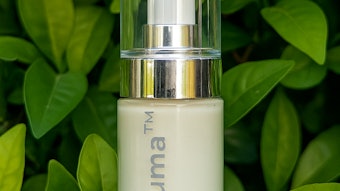The success of beauty brands entering or expanding their presence in today’s market depends on capturing the attention of target consumers. And, according to Alisa Marie Beyer in The Claim Game, claims still speak volumes to consumers. Claims are front and center, Beyer wrote, but many of these claims are very similar. Impactful claims influence a consumer’s spend; therefore, they must be compelling. Consumers expect claims to be more than empty marketing speak, and a claim that truly connects with target consumers’ needs and concerns keeps them excited and willing to purchase. In short, claims must also be “real.”
Unique Selling Propositions
Many claims are based on the products’ inclusion of the latest and greatest ingredients and technologies and leave out unique selling propositions (USPs)—those stories that have the potential to connect with target consumers at a deeper level. The key is utilizing both in the brand message while, again, avoiding empty marketing speak. “[Technical claims and USPs] should be working in tandem,” says Karen Young, founder and CEO of The Young Group. “There’s so much hype out there, it’s tough to know what the real story is. Hyperbolic claims are self-defeating.”
As the list of performance claims continues to grow longer—even for products that are, at their heart, basic—and multitasking products continue to become more popular in certain consumer groups, how does a brand owner unearth their true USP?
“Authenticity plays a key role,” says Liz Grubow, vice president and group creative director of LPK Beauty. “It is not just about the claim, but why does she believe the brand has the ability to deliver on it. Why was your brand created in the first place, what consumer need or desire was satisfied? Leaning into a brand’s history and being true to what the brand stands for is key in communicating performance, expertise and value in the tone of voice that is unique to your brand and believable to your consumer.”
Being True to Brand DNA
There’s no denying a compelling claim is key to connecting with a consumer, but making a claim that’s not true to the brand’s DNA is a poor choice for a brand’s long-term prospects.
Marketing is a long-term proposition, note Derrick Daye and Brad VanAuken in a 2009 Branding Strategy Insider article (www.brandingstrategyinsider.com), and ignoring long-term positions in order to address the short-term (sales, for example, due to a trendy claim) is a mistake. “The most valuable thing a company owns is its position in the consumer’s mind,” stated Daye and VanAuken, noting that a strong brand competes in a narrow segment of the market and then dominates that segment.
“It’s a challenge to stay on message,” says Young. “Few seem to understand the ‘less is more’ philosophy. One story, well told and richly detailed, is much more compelling. It takes a great deal of discipline to build a strong story base and build on it. It takes time, commitment and focus.”
Less is more may seem limiting at first—and global brands may be particularly challenged here because of variances in the types of claims allowed per regulatory laws and restrictions from country to country—but focusing on the claims that support a cohesive global brand message and identity can strengthen a brand’s reach and depth of connection with consumers across markets.
“You can still be true to what your brand stands for and be globally consistent while being locally relevant,” says Grubow. “Frankly, that can be very beneficial for brands as they mine for consumer insights and understand unmet needs or barriers that can drive innovation. By understanding this insight, brands can articulate benefits and nuance the reason to believe in a way that is relevant and compelling to [consumers]. It is about establishing the relationship and that your brand understands what she needs and that she can trust that the brand can deliver on the promise.”
Changing Faces: Consumers and Competition
The challenge-building claims that move products off shelves and support the brand DNA is not limited to those new to the market. The beauty industry thrives on excitement—the new and innovative—and as so many brand owners note, that which “delights” consumers.
Competition, new and old, is often about a game of one-upmanship. So even brands well-loved, deeply established and proven efficacious need nurturing, and that includes reexamining and refreshing claims and how those claims are communicated.
“Brands have to refresh themselves and remain relevant,” says Young. “Everything is changing so fast; our attention spans are so short.” The pool of beauty consumers is fed by a stream—new consumers discovering brands beyond what their parents bought or what are available on local retail shelves. This stream of young consumers, perhaps most notably GenY, also have different purchasing and brand preference drivers, impacting how brands can build sales and connections through claims and product positioning.
“[GenY consumers] will reward brands that have principles and values that drive their products, innovation and, therefore, claim language,” says Grubow. “Bigger, better, faster will not be meaningful. How are you achieving your efficacy? What do you not put in your product (perfume, parabens, pthalates)? How do consumers believe that you are authentic and what type of relationship will you have with them? Honesty, transparency and the tone of the brand will be key criteria for consumers to believe.”
“Often management of established brands is not willing to take the risk to do a [brand] face lift,” adds Young. “But without it, the brand—regardless of its market share—will become stale and irrelevant. Kids don’t want to use or buy their parent’s brands. That’s just human nature.”
Today, too, it’s not simply new consumers who require the rethinking of claims and methods of connection. Established consumer targets have changed. As noted in Private Label Groomed to Take on Personal Care Brands, an August 2010 Datamonitor survey noted that 44% of Americans agree they are spending more on private label products than they were a year ago. There is a clear change of perception regarding private label, and though initially motivated by a desire to save money, many consumers found comparable quality in private label. Brands are working harder to differentiate their products, and it’s even more important to find emotional connections to which consumers will respond. For luxury brands, many mass launches in the past few years offer much of the functionality once only seen in higher-cost products.
“Prestige brands understand how important aspirational, emotional story telling is to the success of a brand,” says Grubow. “They invest in cutting-edge innovation and cull the global expanse to discover new ingredients as well as rituals that resonate. They bring more than the claim to life—leveraging product, packaging, communication, service,—a complete multisensorial experience to deliver the luxury and expertise of a brand.”
At the end of the day, claims are about the connection between consumers and brands—how is this product relevant to this consumer. There’s always a better price point and an equally efficacious choice, but choosing and living up to claims that are true to the brand DNA while expressing the USP are stronger bets at finding a place in consumers’ lives.










